Corn and soybean totals tick higher from the prior week.

Grain export inspections didn’t deliver a lot of positive news for wheat, with a tally of less than half of the prior week’s volume for the week ending November 22. Corn and soybeans moved moderately higher week-over-week, meantime, but aren’t turning in numbers to consistently stay ahead of the weekly rate needed to match USDA forecasts.
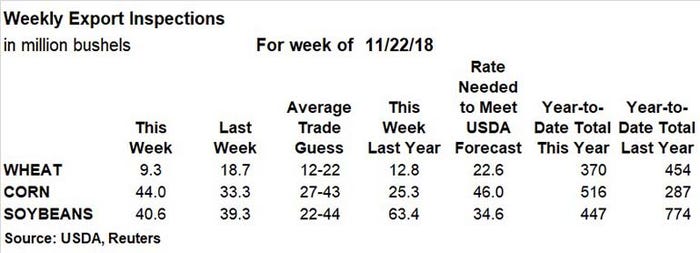
Wheat export inspections last week only reached 9.3 million bushels, versus 18.7 million bushels the week prior, and falling below the average trade guess, which ranged between 12 million and 22 million bushels. The weekly rate needed to meet USDA forecasts moved higher, to 22.6 million bushels, and cumulative 2018/19 marketing year totals of 370 million bushels lag 18.5% below the pace of 2017/18.
“Export inspections for wheat continue to disappoint, dropping by half in the latest week,” says Farm Futures senior grain market analyst Bryce Knorr. “While USDA forecasts a year-on-year increase of 14%, inspections nearly halfway through the marketing year are down nearly 19%.”
That tempered optimism from recent sales to Egypt that hinted demand might finally be improving, Knorr says. Suspension of shipments from a Russian port due to quality concerns didn’t affect prices or shipments out of the Black Sea, so the U.S. can compete only by lowering prices, he says.
South Korea was the No. 1 destination for U.S. wheat export inspections last week, with 2.8 million bushels. Other significant destinations included Japan (2.2 million), Nigeria (1.3 million) and Mexico (1.0 million).
Soybean export inspections reached 40.6 million bushels last week, staying just ahead of the prior week’s total of 39.6 million bushels and landing on the high end of trade estimates, which ranged between 22 million and 44 million bushels. The weekly rate needed to meet USDA forecasts eased to 34.6 million bushels, but cumulative totals for the 2018/19 marketing year remain 42% lower year-over-year, at 447 million bushels.
“China was again absent from the report, but 23 countries loaded out soybeans, albeit in small amounts,” Knorr says. “Soybean shipments will be spread throughout the marketing year rather than front-loaded, opening shipping capacity for corn. That’s helped firm basis last week as shippers scramble to fill final tows before northern stretches of the Mississippi River close for the season.”
The Netherlands represented the No. 1 destination for U.S. soybean export inspections last week, with 6.6 million bushels. Other top destinations included Pakistan (4.8 million), Argentina (4.4 million), Mexico (4.1 million) and Canada (2.7 million).
Corn export inspections reached 44.0 million bushels last week, coming in moderately ahead of the prior week’s total of 33.3 million bushels and besting the average trade guess, which ranged between 27 million and 43 million bushels. The weekly rate needed to match USDA forecasts still inched higher, reaching a fairly aggressive 46.0 million bushels. Cumulative totals for the 2018/19 marketing year have reached 516 million bushels, which is significantly higher than 2017/18’s pace of 287 million bushels.
Japan led the way for U.S. corn export inspections last week, with 9.9 million bushels. Other top destinations included Mexico (9.4 million), Colombia (7.7 million), South Korea (5.5 million) and Peru (4.2 million).
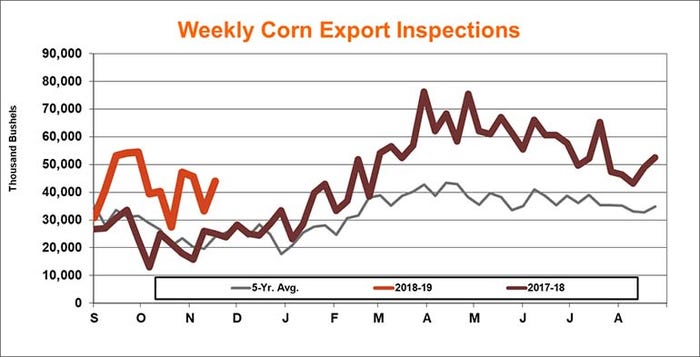
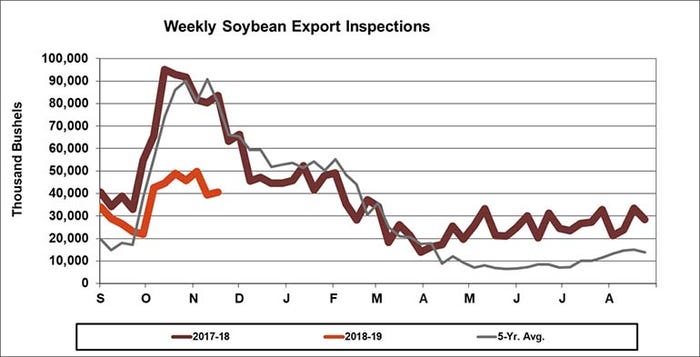
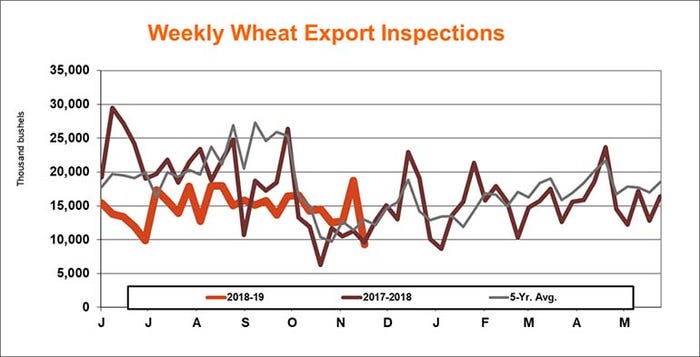
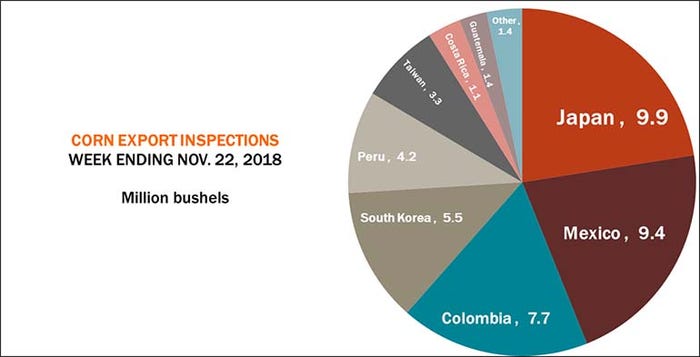
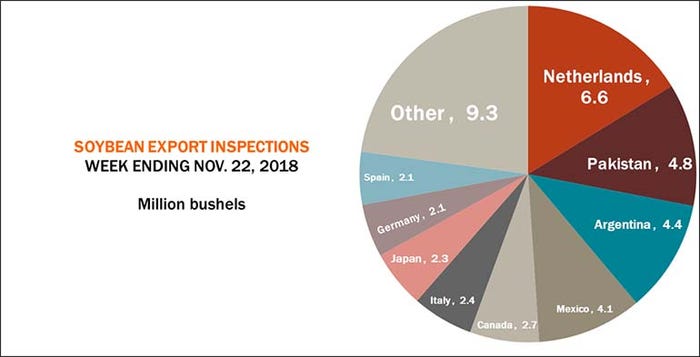

About the Author(s)
You May Also Like





